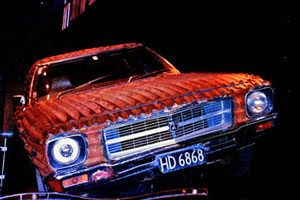 |
 | ||||||||||
The Eye of the Beholder
|
 |
|||||||||
|
No two people will see things in the exact same way. When I take a photograph, itís a great learning process for me. Each person that describes it or looks at it, has a totally different way of seeing it. People see colors differently; they see different things in the same picture. They interpret what theyíre seeing based on their own intellect.
Iíve been taking photos since 1984. I started because I wanted to become a participant in the visual arts field, and affect the consciousness of sighted people. I was already a musician, playing with jazz greats like Charlie Haden in clubs like the Comeback Inn in LA. I knew that people who hear the same composition, theyíre going to hear differently than the composer. I think shooting color v black and white is similar to writing a musical composition in a major or minor key.
After going to exhibits, hearing people describe photos and paintings, I felt kind of emptyó- I wasnít getting all that I could get. The best thing, I decided, was to try to become at least an artist who was doing something in one of the visual arts.
I bought a 35 mm SLR and continued my work, sometimes with three cameras: one loaded with black and white film, one for color, and another with maybe a different lens. Now I primarily shoot digital images.
When I take a picture, I listen to the voice, to sound, and try to realize how tall my subject is, relative to my height. Am I facing the right direction? Andrea Du Plessis, my education coordinator, has acted as my assistant for five years. ďPoint it up a little bit. Point it down,Ē she says, if I decide to do a close-up, or maybe get more background.
Itís a delicate balance Ė she could see each image very differently. When Andrea says, ďThatís a great shotĒ if donít feel that image stimulates me, then I donít want it. She doesnít interfere with what I do unless Iím way off.
What can I learn by showing my images to sighted people? Itís an overall effort to serve, regardless of what I do: Shoot pool; Throw darts. And Iíve tried both.
All the photographer can do is capture what he or she perceives. Itís all about trying to find more profound ways of growing.
© Henry Butler
Dispatches are brought to you by Canon. Send Canon a message of thanks. |
||||||||||
Back to April 2005 Contents
|
|



